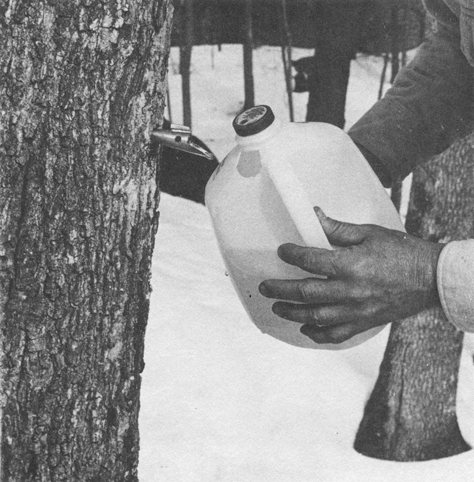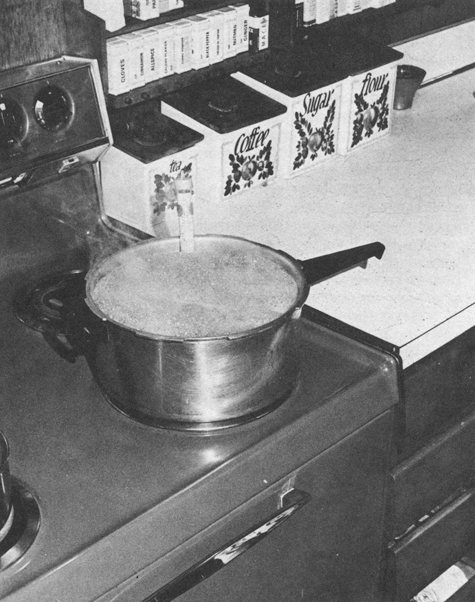Backyard Sugarin’

DIY sweets from trees
I really like this small guide because the author emphasizes the cheapest possible way to get up and running. While commercial maple sugaring has gone all high tech, with miles of plastic tubing and vacuum pumps, a weekend backyarder can use traditional homemade apparatus to produce a few gallons of golden syrup each season. Don’t need much if you have the minimum trees, scrap wood, outdoor workspace and time. (And BTW, you can get syrup form all kinds of maples in the right climate zone.)
From my few clumsy experiments using an earlier edition of this book, I can tell you it’s a lot of work for a little syrup — but because its your syrup, it tastes like ambrosia.
09/27/13Excerpt
So, let's sum up the things you ought to be thinking about well in advance if you're aiming to make 5 gallons of syrup.
So, let's sum up the things you ought to be thinking about well in advance if you're aiming to make 5 gallons of syrup.
- Save up at least 20 plastic milk bottles or other containers to serve as sap buckets.
- Pick out your trees for tapping and get permission, if necessary, to tap them. You're going to drill 20 holes.
- Collect about a half cord of good dry wood, pile it near your planned evaporator site and cover it over.
- Save up 10 2-pound coffee cans with plastic lids, or something comparable for storing your syrup.
There are other preparations that can be made in advance, too, like designing and collecting parts for your homemade evaporator, and perhaps whittling your own sap spouts, but these things can be done over the winter.
*
*
Remember that if you're standing on top of a four-foot snowbank when making your tap holes at the beginning of the season, those taps may be seven feet off the ground near the end of the season when the snowbank has melted. It's hard to collect sap from buckets seven feet off the ground.
*
*
Apart from eliminating the high cost of buckets, the Idlenot Dairy Low-Fat Sap Bucket has some very real advantages over conventional buckets. For one thing, except for the 3/4" hole, it is completely enclosed, so you don't get any debris or unwanted predators in the sap. For another thing, it's semi-transparent, so you can see from a distance whether or not it will be worth slogging through the snow to empty it. And, maybe best of all, when the season is over, you don't have to go to all the bother of washing and storing your buckets. You can just drop them off at your local recycling center and start with a fresh set of buckets next season.
*
*
Canning maple syrup presents the same problems as the hot canning of cooked vegetables, with at least one important (and happy) difference. If a jar of canned tomatoes goes bad, you've had it. With syrup, if it gets moldy, you can scoop off the mold, bring the syrup back up to a boil, and you're back in business.
*
This is what syrup looks like when it's about to boil over. Quick! Someone lift the pot off the burner (or touch the syrup with a bit of butter).
Backyard Sugarin' Rink Mann, Daniel Wolf 2006, 96 pages $10













